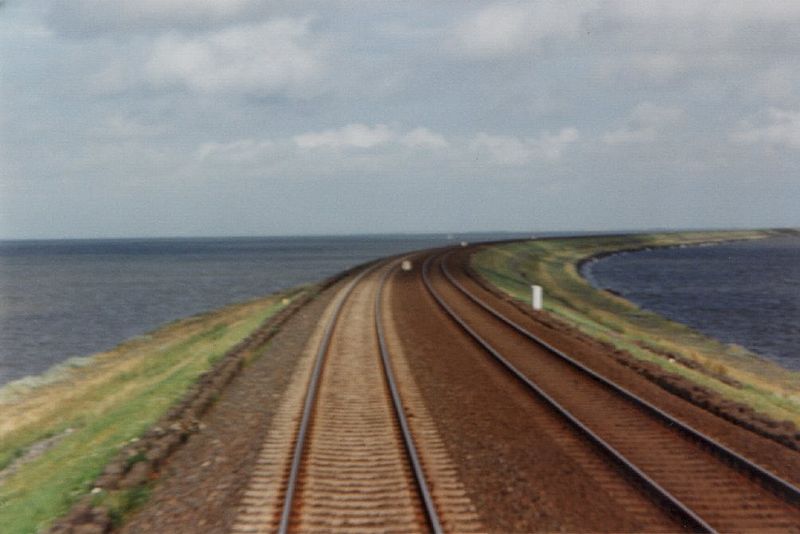 © AndreasS / Wikimedia Commons [CC BY-SA 3.0]
© AndreasS / Wikimedia Commons [CC BY-SA 3.0]Hindenburgdamm
For many years now it has not been necessary to board a ship in order to reach the island of Sylt. On the 1st of June 1927, the 11km long Hindenburgdamm was opened, since then connecting Sylt with the Schleswig-Holstein mainland. Construction work took four years and over 3m³ of sand and clay and 120,000 tonnes of stone were processed. Since 1972, the causeway – back then one-way – has been able to be travelled in both directions.
The causeway got its name from the Reich president back then, Paul von Hindenburg. He was the first official passenger to cross the causeway from the last mainland train station in Klanxbüll to Westerland. The name “Hindenburgdamm” was not officially promulgated at the dedication of the causeway, but rather established itself amongst Sylt locals. Ever since Hindenburg’s problematic position during Hitler’s take over, the name has been criticised time and again, however, attempts to rename the causeway have failed repeatedly.
Today the trip across the only 9km long reclaimed Hindenburgdamm takes around 35 minutes. The causeway is solely for trains; however, crossing in a car is no problem: a car train carries numerous passengers and their cars across to Sylt daily.
The causeway got its name from the Reich president back then, Paul von Hindenburg. He was the first official passenger to cross the causeway from the last mainland train station in Klanxbüll to Westerland. The name “Hindenburgdamm” was not officially promulgated at the dedication of the causeway, but rather established itself amongst Sylt locals. Ever since Hindenburg’s problematic position during Hitler’s take over, the name has been criticised time and again, however, attempts to rename the causeway have failed repeatedly.
Today the trip across the only 9km long reclaimed Hindenburgdamm takes around 35 minutes. The causeway is solely for trains; however, crossing in a car is no problem: a car train carries numerous passengers and their cars across to Sylt daily.